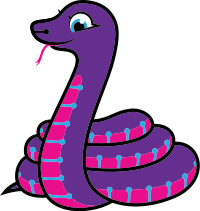CircuitPython – Wikipedia
From Wikipedia, the free encyclopedia
Programming language

Logo of the Blinka library, a compatibility layer for CircuitPython |
|
| Original author(s) | Adafruit Industries |
|---|---|
| Initial release | July 19, 2017[1] |
| Stable release | |
| Repository | https://github.com/adafruit/circuitpython |
| Written in | C[3] |
| Platform | microcontroller and single board computers using the Atmel SAMD21, Atmel SAMD51, Nordic nRF52840, STMicro STM32, and ESP32, ARMmicrocontrollers, from Adafruit, SparkFun, Arduino, Particle, Raspberry Pi and others |
| Type | Python implementation |
| License | MIT license[4] |
| Website | circuitpython |
CircuitPython[5] is an open-source derivative of the MicroPython programming language targeted toward students and beginners. Development of CircuitPython is supported by Adafruit Industries. It is a software implementation of the Python 3 programming language, written in C.[3] It has been ported to run on several modern microcontrollers.
CircuitPython consists of a Python compiler to bytecode and a runtime interpreter of that bytecode that runs on the microcontroller hardware. The user is presented with an interactive prompt (the REPL) to execute supported commands immediately. Included are a selection of core Python libraries. CircuitPython includes modules which give the programmer access to the low-level hardware of supported products as well as higher-level libraries for beginners.[6]
CircuitPython is a fork of MicroPython, originally created by Damien George.[7] The MicroPython community continues to discuss[8] forks of MicroPython into variants such as CircuitPython.
CircuitPython is targeted to be compliant with CPython, the reference implementation of the Python programming language.[9] Programs written for CircuitPython-compatible boards may not run unmodified on other platforms such as the Raspberry Pi.[10]
CircuitPython is being used as an emerging alternative solution for microcontroller programming, which is usually done in C, C++, or assembly. The language has also seen uptake in making small, handheld video game devices.[11][better source needed] Developer Chris Young has ported his infrared transmit-and-receive software to CircuitPython to provide interactivity and to aid those with accessibility issues.[12]
The user community support includes a Discord chat room and product support forums.[13] A Twitter account dedicated to CircuitPython news was established in 2018.[14] A newsletter, Python on Hardware, is published weekly since 15 November, 2016 by Adafruit to provide news and information on CircuitPython, MicroPython, and Python on single board computers.[15] A Reddit subreddit, r/CircuitPython, provides news on CircuitPython and related news and projects and has about 3,000 members.[16]
Hardware support[edit]
The version 6.2.0 supports Atmel SAMD21 and SAMD51 microcontrollers from Microchip Technology,[17] nRF52833 and nRF52840 from Nordic Semiconductor, CXD5602 (Spresense) from Sony, and STM32 F4-series from STMicroelectronics.[18] Previous versions supported the ESP8266 microcontroller, but its support was dropped in version 4.[19] It also supports single-board computers like Raspberry Pi.
References[edit]
- ^ Shawcroft, Scott (19 July 2017). “CircuitPython 1.0.0!”. Adafruit Blog. Adafruit Industries. Retrieved 1 May 2018.
- ^ “Release 8.0.4”. 15 March 2023. Retrieved 30 March 2023.
- ^ a b “adafruit/circuitpython”. GitHub. Adafruit Industries. Retrieved 2 May 2018.
- ^ George, Damien P. (4 May 2014). “circuitpython/LICENSE”. GitHub. Retrieved 1 May 2018.
- ^ “CircuitPython is an education friendly open-source derivative of MicroPython”. GitHub. Retrieved 30 April 2018.
- ^ “CircuitPython”. Read the Docs. Adafruit Industries. Retrieved 1 May 2018.
- ^ George, Damien (20 May 2016). “Damien P. George”. Damien P. George. Retrieved 1 May 2018.
- ^ “Adafruit CircuitPython”. MicroPython Forum. MicroPython.org. Retrieved 2 May 2018.
- ^ Lewis, James (14 February 2018). “Circuit Python adds Python to Microcontrollers”. The Bald Engineer. Retrieved 2 May 2018.
- ^ Ganne, Simon. “Can I use circuitPython code on my raspberry?”. Element 14 Community. Element 14.
- ^ Dopieralski, Radomir. “CircuitPython LAMEBOY”. BitBucket. BitBucket. Retrieved 2 May 2018.
- ^ Young, Chris (6 June 2018). “Announcing IRLibCP — a Circuit Python Module for Infrared Transmitting and Receiving”. CY’s Tech Talk. Chris Young. Retrieved 2 May 2018.
- ^ “Adafruit CircuitPython and MicroPython”. Adafruit Support Forums. Adafruit Industries. Retrieved 1 May 2018.
- ^ “CircuitPython”. Twitter. Adfafruit Industries. Retrieved 1 May 2018.
- ^ “The Python on Hardware Newsletter”. Adafruit Daily. Adafruit Industries. Retrieved 24 March 2022.
- ^ “r/CircuitPython”. Reddit.com. Adafruit Industries. Retrieved 24 March 2022.
- ^ Kraft, Caleb (11 August 2017). “CircuitPython Snakes its Way onto Adafruit Hardware”. Makezine. Maker Media, Inc. Retrieved 2 May 2018.
- ^ Halbert, Dan (5 April 2021). “CircuitPython 6.2.0 released!”. Adafruit Blog. Adafruit Industries. Retrieved 20 April 2021.
- ^ “Why are we dropping support for ESP8266?”. Adafruit.com. Adafruit Industries. Retrieved 15 April 2019.
External links[edit]
Recent Comments